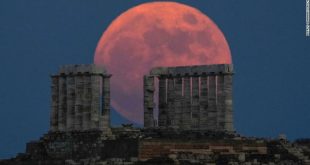One of the inscriptions credits the creator God Atum as being responsible for the flood of the Nile, likely dating to the Late Period (664-332 BC)
Nevine El-Aref – Ahram Online
A German-Egyptian archaeological mission working in Matariya, ancient Heliopolis, has uncovered a number of inscribed stone fragments from the 12th and 20th dynasties and the Third Intermediate Period of Ancient Egypt.
The discovery was made during excavation work carried out on debris piles located near a limestone burning installation near 4th and 2nd century workshops in the southeastern section of the innermost enclosure of the Sun Temple.
Ayman Ashmawy, the head of the Ancient Egyptian Antiquities Department at the Ministry of Antiquities and the head of the Egyptian team, explained that work in the area has yielded much evidence that shows the reusing of the main temple of Heliopolis, with fragments of small statues found in the temple inventory from other historical periods. The work was accompanied by archaeological and archaeo-zoological studies.

Dietrich Raue, the head of the German team, said that the mission has excavated the area located to the east of the obelisk of Matariya, where it found a mud brick enclosure and a limestone staircase leading to a higher level by passing a channel with a false door, which was probably connected to rituals that took place in the innermost section of the temple at the obelisk.
Raue told Ahram Online that an inscription crediting the creator God Atum as being responsible for the flood of the Nile was also found. The inscription likely dates to the Late Period (664-332 BC). Many of these structures bear traces of reuse and destruction by fire.

Khaled Abul-Ela, director of the Inspectorate of Ain Shams and the Matariya archaeological site, said that a shelter has been constructed to protect the blocks on display at the open-air museum in Matariya.
The work was carried out under the supervision of the Project Department Sector at the ministry and supported by the cultural preservation programme of the Federal Foreign Office of Germany.
The open-air museum houses basalt reliefs and reliefs of the Heliopolis temple for Atum of Nektanebu I, limestone reliefs and inscriptions from the Ramesside era, as well as selected finds from the necropolis of Heliopolis.







